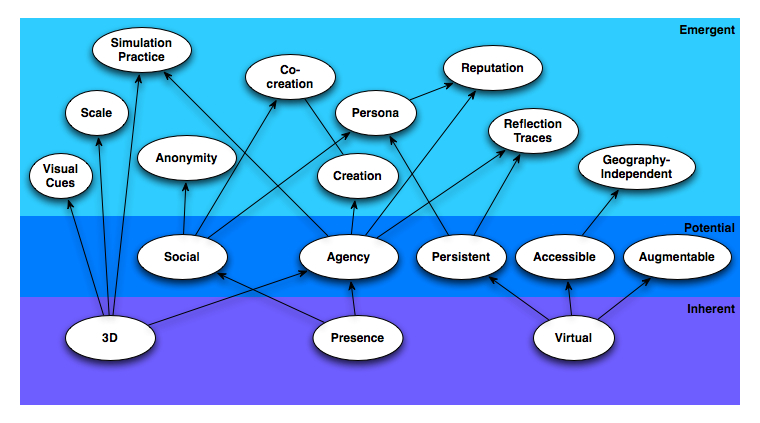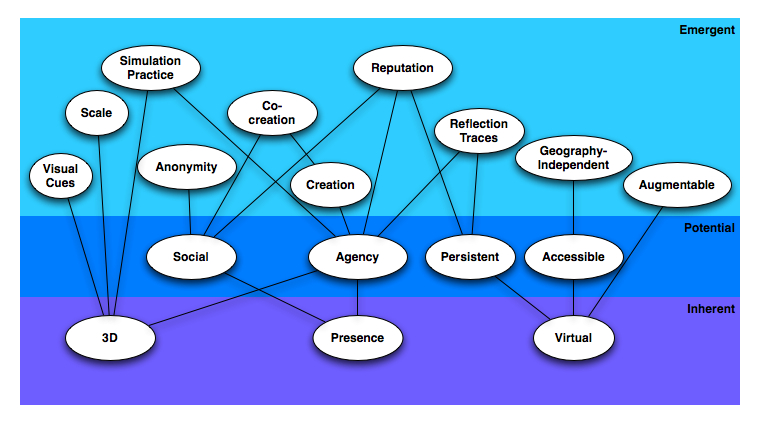 Corrie Bergeron (@skydadddy) pointed out that I hadn’t really accounted for the ability to create a persona, a representation of yourself via avatar that reflects how you’d like to be perceived. Chuck Hamilton did have it in his list, and I thought it was implicit in the alternative to anonymity, but on reflection, I think it does deserve it’s own affordance, and implications for reputation.
Corrie Bergeron (@skydadddy) pointed out that I hadn’t really accounted for the ability to create a persona, a representation of yourself via avatar that reflects how you’d like to be perceived. Chuck Hamilton did have it in his list, and I thought it was implicit in the alternative to anonymity, but on reflection, I think it does deserve it’s own affordance, and implications for reputation.
Of course, you’ll have a persona regardless, if you’re present in the world, but the ability to customize one is the unique opportunity.
The question then becomes, how do you use this representation? Caroline Avey (@aveyca) presented a wide variety of uses of virtual worlds that ACS is exploring, and some are really not things that require long term personas, but are instead ways for folks to come together independent of geography for introductions of new products or other events. Similarly, other uses of virtual worlds may be better configured with other combinations of affordances. Different environments have different implementation of the affordances, or the ability to limit the capability of some (ie not have customizable avatars or not support agency) to meet particular event needs.
Understanding your virtual world goals can help determine what affordances are critical, and support your design criteria (and tool choice). That’s my intention, at any rate. I really appreciate feedback that helps me refine the models I develop, advocate, and use. Thoughts and comments always welcome.
 I start with what I think are the core affordances of virtual worlds, that there’s a 3D world, that you can visit, and that’s digital. From there, I see that you can enable others to be there (social), you can enable action (agency), the world can be kept around (persistent), and it can be made accessible broadly (e.g. through the internet).
I start with what I think are the core affordances of virtual worlds, that there’s a 3D world, that you can visit, and that’s digital. From there, I see that you can enable others to be there (social), you can enable action (agency), the world can be kept around (persistent), and it can be made accessible broadly (e.g. through the internet).